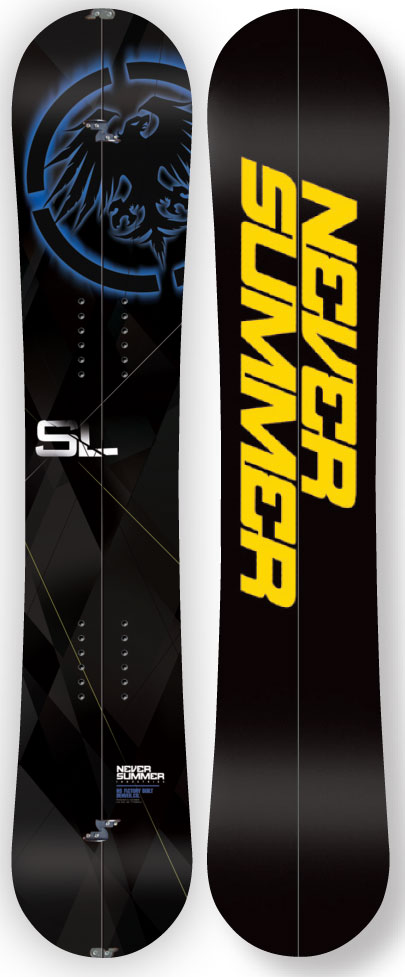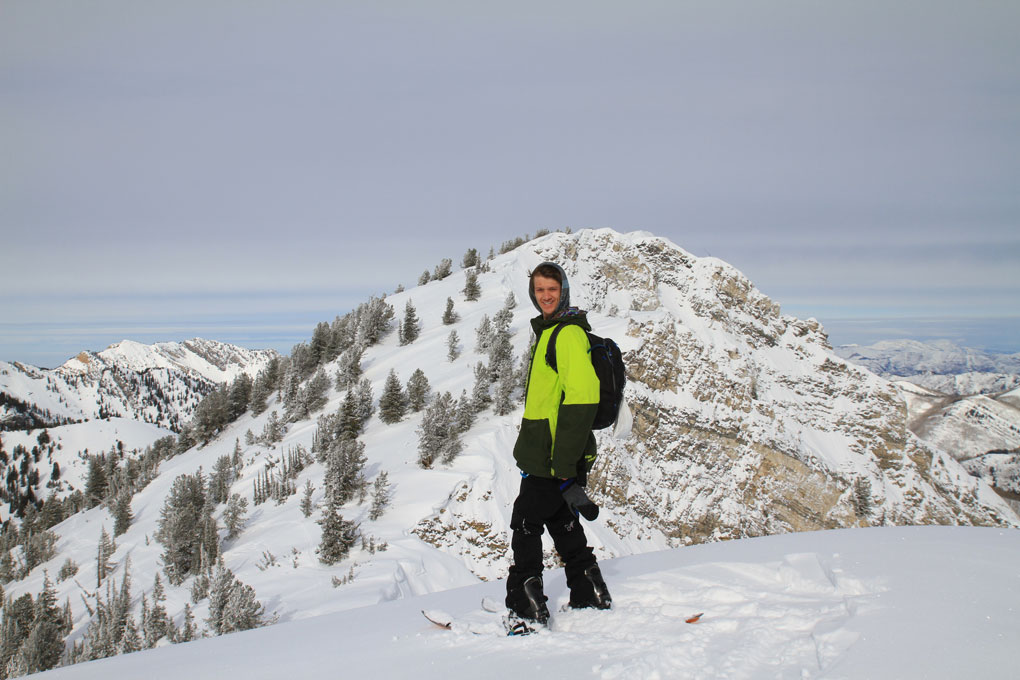 Snowboard: 2013-2014 Never Summer SL Split, 158 cm
Snowboard: 2013-2014 Never Summer SL Split, 158 cm
Dimensions (mm): 300-254-300
Sidecut Radius: 7.43m
Shape: Directional
Bindings: Voile Light Rail
Skins: Voile Split Skins
Boots: Burton Ion
Stance: 23.5in, +17, -12
Days Ridden: 10
Locations: Mt. Baker, Park City, Wasatch backcountry
[Editor’s Note: Our review was conducted on the 12/13 SL Split, which will return unchanged for 13/14, except for the graphics.]
Until splitboarding’s recent boom in popularity, splits had a tendency to be big, powder-specific guns, which really didn’t fit my riding style.
My main background in snowboarding is park riding, so I did not expect that transitioning directly from my 158 Burton Easy Livin to a splitboard would be easy. In the backcountry, I want to be spinning, flipping, and jibbing the same way I would in a park, so I’m always searching for a middle ground with splitboards: something between a park board and powder / big-mountain board, and ideally something more on the park end of the spectrum.
After reading the manufacturer description of the Never Summer SL Split, however, it sounded like the perfect board. Never Summer describes the SL Split as “slightly set back for a more centered and balanced freestyle ride” and that it will enable you to “access and build backcountry booters, lap a favorite cornice line and spin off that wind lip you’ve only dreamed of.”
Sizing / Rocker Profile
Though many people size-up for their powder boards, I decided to stick with my usual 158. This was largely because the SL Split has what Never Summer calls R.C. Technology, which is a combination of reverse camber between the feet and a true camber tip and tail. I had ridden other boards with similar technology (Burton’s Springloaded and Lib Tech C2), and after experiencing how well those designs floated in powder, I hoped the SL Split would provide me with similar flotation without needing to ride a larger board.
Furthermore, the camber used on the SL Split is intended to add stability and increase edge control at higher speeds while still allowing for a playful, skateboard-influenced feel when jibbing or going slower.
For splitboarding, this is ideal, as accessible terrain varies greatly with snow conditions, so having a board that can perform on mellower, relaxed runs as well as hold an edge on wind-blown peaks is best. This blend of cambers, paired with a slightly set back stance, seemed on paper to be the ideal board both for jumping and for the lines I aimed to ride.
Touring
Going out for a split tour generally equates to about 95% skinning in tour mode, and the remaining 5% standing sideways, actually snowboarding. So a split’s weight and functionality in tour mode is as important as how it rides downhill.
Beyond the obvious snowboard proficiency necessary to ride a splitboard down the mountain, riders also need to have a certain degree of aptitude at skinning up. The stiffness of the SL Split, as well as its light weight, made the transition from snowboarder to skier much easier than I had anticipated, since I had very little prior experience skiing.
By providing an extremely stable platform underfoot in both modes, the SL Split gave me an increased level of confidence when I encountered a downhill when skinning or steep uphill section where side-hilling was necessary.
The relative lightness of the SL Split, paired with Voile Lightrail Bindings, also really made a difference when touring, as each additional ounce becomes increasingly noticeable during a long skin. This proved to be most apparent when I was able to pass my partners on their heavier, homemade splits without splitboard-specific bindings. Additionally, I gained ground on my partners when turning on cuts and switchbacks while ascending, as having a lighter board and connection hardware allowed me to swing the skis around quicker and less clumsily than they could.

The SL Split also features a full-metal edge wrap that extends to the insides of both “skis” when split. This was very advantageous as it allowed me to side-hill up icier sections with ease, and hold an edge on traverses while ascending. My friends on homemade splits didn’t share the same advantage, and frequently struggled to maintain an edge on heavily trafficked skin tracks.

yo zeppelin, this was a great review! it was exactly what i was looking for! i want to get into splitboarding. i couldnt decide between the sl split ant the jones mountain twin split! this made up my mind. but i got a little confused about the size i was for sure i wanted a 160 or bigger, but u were good with a 158 at 170 pounds? i am 5’8 160 and i had heard the 158 might be too small while touring. u didnt have a problem? i ride a 157 proto ct and i kinda wanted to stay pretty close to that size but i was worried about the touring part.